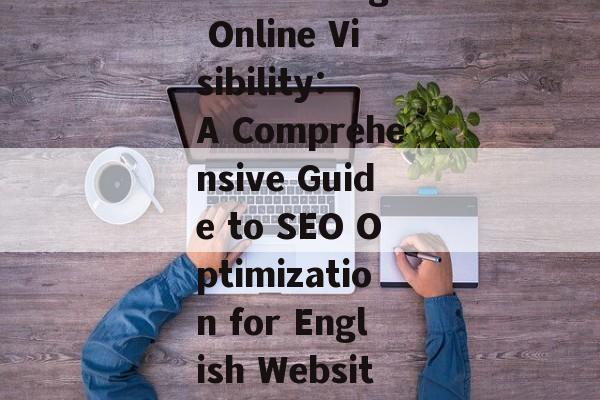Maximizing Online Visibility: A Comprehensive Guide to SEO Optimization for English Websites
In the vast and competitive digital landscape, having an English website is a significant step towards reaching a global audience. However, simply having a website is not enough; it needs to be discoverable and appealing to potential visitors. This is where SEO optimization comes into play. Search Engine Optimization (SEO) is the process of enhancing a website to increase its visibility on search engine results pages (SERPs). For English websites, SEO optimization is crucial to attract international traffic and improve overall online presence. This comprehensive guide will delve into the essential strategies for SEO optimization for English websites.
Understanding SEO for English Websites
Before diving into the strategies, it’s important to understand the nuances of SEO for English websites. English is the primary language of the internet, but it's not without its complexities. Here are a few key points to consider:
1、Language and Cultural Differences: English websites must cater to a diverse audience, which means understanding and adapting to different linguistic nuances and cultural contexts.
2、International SEO: English websites that target multiple countries may need to consider international SEO strategies, including language-specific URLs, hreflang tags, and localized content.
3、Keyword Research: Identifying the right keywords is crucial. This involves understanding the search intent of your target audience and selecting relevant terms that are both popular and have low competition.
Strategies for SEO Optimization of English Websites
1、Keyword Research and Optimization
Keyword research is the foundation of SEO optimization. To effectively target English-speaking audiences, follow these steps:
Use Keyword Research Tools: Tools like Google Keyword Planner, Ahrefs, and SEMrush can help identify relevant keywords with high search volumes and low competition.
Analyze Search Intent: Understand what users are looking for when they type in specific keywords. Are they looking for information, products, or services?
Long-Tail Keywords: Incorporate long-tail keywords, which are longer and more specific phrases, to attract a more targeted audience.
2、On-Page Optimization
On-page optimization involves optimizing individual web pages to rank higher and earn more relevant traffic in search engines. Here’s how to do it:
Quality Content: Create high-quality, informative, and engaging content that adds value to your audience.
Meta Tags: Optimize title tags, meta descriptions, and header tags with relevant keywords.
URL Structure: Use clear, descriptive URLs that include keywords and are easy to read.

Internal Linking: Use internal links to help visitors navigate your site and to distribute page authority throughout your site.
3、Technical SEO
Technical SEO ensures that your website is crawlable and indexable by search engines. Focus on the following aspects:
Mobile Optimization: Ensure your website is responsive and provides a good user experience on mobile devices.
Page Load Speed: Optimize your website’s loading speed, as slow-loading pages can negatively impact user experience and rankings.
SSL Certificate: Use HTTPS to secure your website and boost trust with users and search engines.
4、Off-Page Optimization
Off-page optimization involves actions taken outside of your own website to increase the ranking and visibility of your site. Key tactics include:
Backlinks: Build a strong backlink profile by getting links from reputable and authoritative websites.
Social Media: Utilize social media platforms to promote your content and drive traffic to your website.
Guest Blogging: Write guest posts for other websites to gain exposure and authoritative backlinks.
5、Local SEO for English Websites
If your English website targets a specific geographic area, consider local SEO strategies:
Google My Business: Create and optimize your Google My Business listing to appear in local search results.
Local Keywords: Use local keywords and include the city or region in your content and metadata.
6、Monitoring and Analytics
Finally, regularly monitor your website’s performance using analytics tools like Google Analytics. Track metrics such as organic traffic, bounce rate, and conversion rates to understand what works and what doesn’t. Use this data to refine your SEO strategy over time.
Conclusion
SEO optimization for English websites is a multifaceted process that requires a combination of keyword research, on-page and technical SEO, off-page optimization, and an understanding of the global audience. By implementing these strategies, you can increase your website’s visibility, attract more international traffic, and ultimately grow your business on a global scale. Remember, SEO is an ongoing process, and staying up-to-date with the latest trends and algorithm changes is crucial for long-term success.
相关文章

最新留言